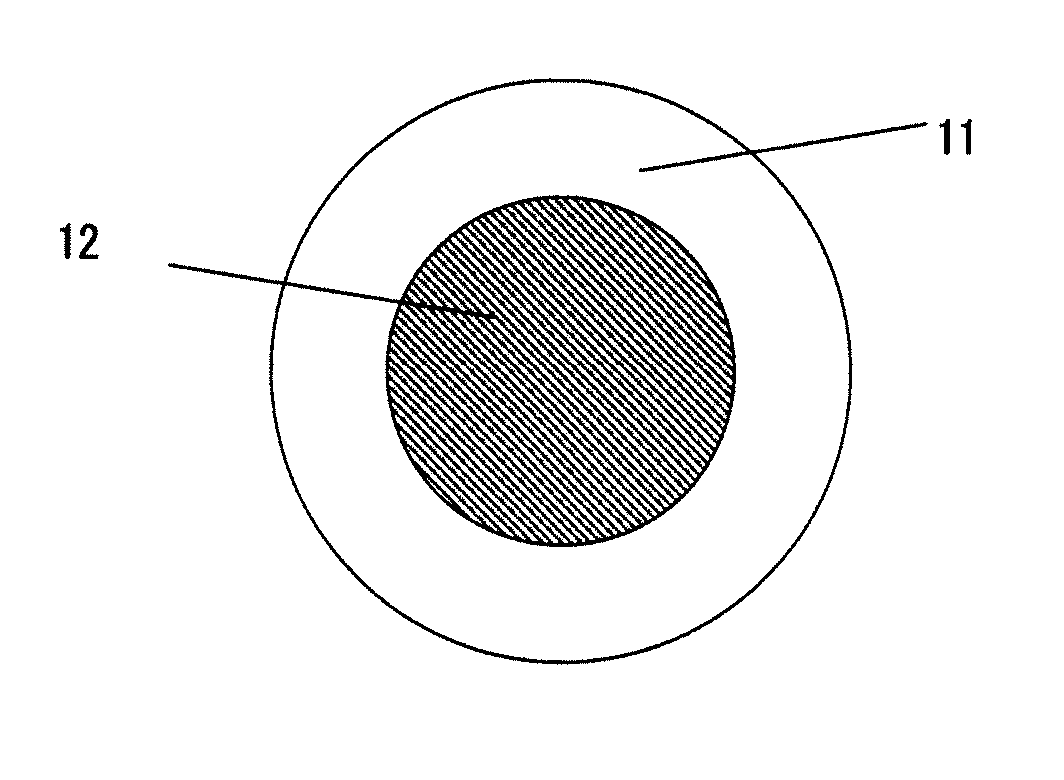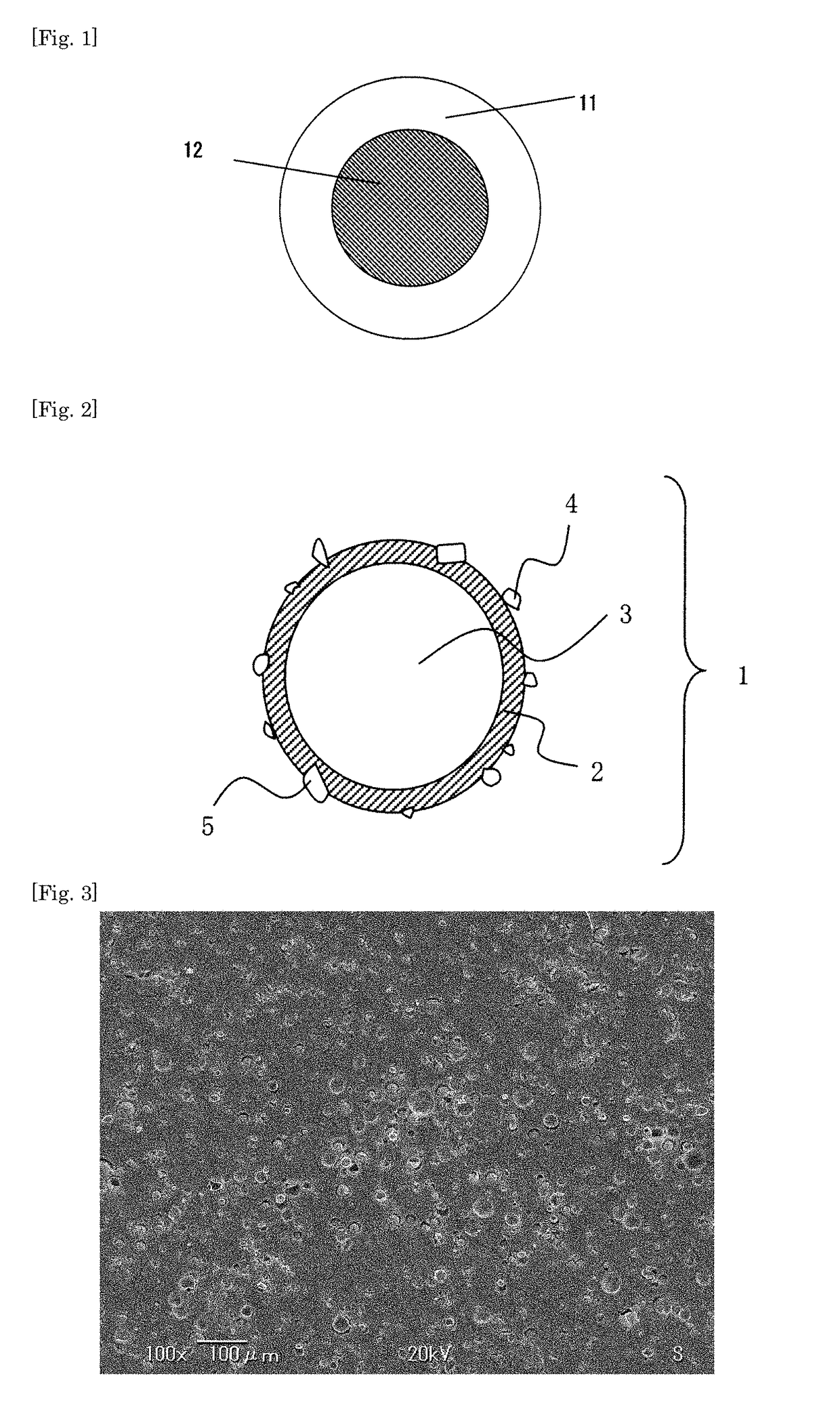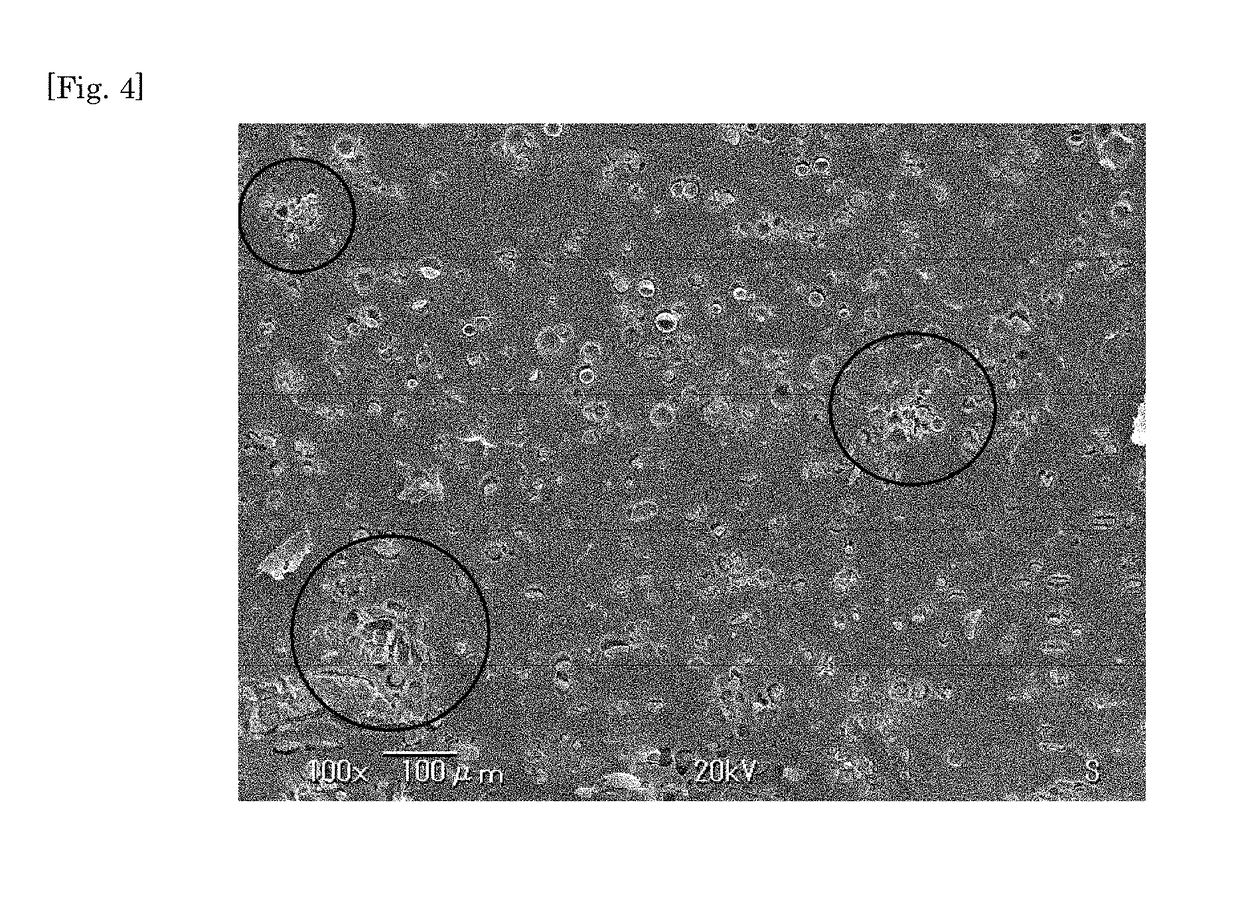Heat-expandable microspheres and application thereof
- Summary
- Abstract
- Description
- Claims
- Application Information
AI Technical Summary
Benefits of technology
Problems solved by technology
Method used
Image
Examples
example 1
[0159]An aqueous dispersion medium was prepared by adding 150 g of sodium chloride, 50 g of colloidal silica containing 20 wt % of silica, 4.0 g of polyvinyl pyrolidone and 1.0 g of ethylenediaminetetraaceticacid tetrasodiumsalt to 600 g of deionized water and controlling the pH of the mixture within the range from 2.0 to 3.0.
[0160]An oily mixture was prepared by mixing 4 g of acrylonitrile, 114 g of methacrylonitrile, 153 g of methacrylic acid, 15 g of methacrylamide, 15 g of styrene, 0.06 g of 1,9-nonanediol diacrylate, 30 g of isopentane, 30 g of isooctane and 8 g of the liquid containing 50% of di-sec-butyl peroxydicarbonate.
[0161]The aqueous dispersion medium and the oily mixture were mixed and agitated with a Homo-mixer to be prepared into a suspension. Then the suspension was transferred to a compressive reactor of 1.5-liter capacity, purged with nitrogen, and polymerized at 60° C. for 20 hours with agitation under the initial reaction pressure of 0.2 MPa. The resultant polym...
example 2
[0162]An aqueous dispersion medium was prepared by adding 150 g of sodium chloride, 20 g of colloidal silica containing 20 wt % of silica, 20 g of alumina sol containing 20 wt % of alumina and 3.0 g of adipic acid-diethanolamine condensate to 600 g of deionized water and controlling the pH of the mixture within the range from 3.0 to 4.0.
[0163]Heat-expandable microspheres were produced in the same manner as in Example 1 except that the oily mixture was replaced as shown in Table 1. The mean particle size, expansion-initiation temperature, maximum expansion temperature, moisture content, angle of repose, collapse angle, dispersibility 1 and dispersibility 2 of the resultant heat-expandable microspheres were determined. The result is shown in Table 1.
example 23
[0183]The ethylene-vinyl-acetate resin sheet containing the microspheres, which was prepared (from the composition containing the microspheres) for determining the dispersibility 2 of the microspheres of Example 1, was heated in hot air at 230° C. for 1 min to be processed into the expanded sheet having a specific gravity of 0.33. The expanded sheet was inspected and the bubbles in the sheet were uniformly distributed. The change in the yellowness index of the expanded sheet was 10, indicating a high whiteness of the sheet.
PUM
| Property | Measurement | Unit |
|---|---|---|
| Temperature | aaaaa | aaaaa |
| Composition | aaaaa | aaaaa |
| Heat | aaaaa | aaaaa |
Abstract
Description
Claims
Application Information
 Login to View More
Login to View More - R&D
- Intellectual Property
- Life Sciences
- Materials
- Tech Scout
- Unparalleled Data Quality
- Higher Quality Content
- 60% Fewer Hallucinations
Browse by: Latest US Patents, China's latest patents, Technical Efficacy Thesaurus, Application Domain, Technology Topic, Popular Technical Reports.
© 2025 PatSnap. All rights reserved.Legal|Privacy policy|Modern Slavery Act Transparency Statement|Sitemap|About US| Contact US: help@patsnap.com



